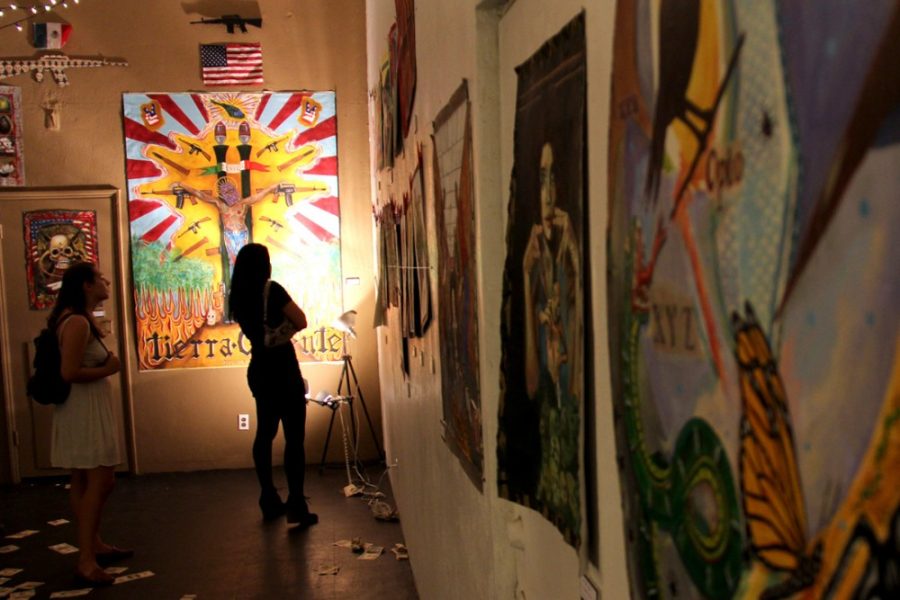As Congress continues to squabble about how to protect the border, a Tucson artist is using his paintbrush to express his frustration with local politics.
“Illegal Utopia” is a new gallery curated by Martin Quintanilla in downtown Tucson at Studio ONE. Originally produced in Michoacán, Mexico, the gallery features politically motivated works created by Quintanilla, as well as contributions from other artists, that depict the violent action of Mexico’s drug wars.
Upon entering the quaint exhibit at 197 E. Toole Ave., nestled in the historic arts warehouse district, one immediately notices signed dollar bills littering the ground. Macabre art hangs from the walls, portraying the violence taking place just south of Tucson, which many are frequently detached from.
“The signed bills on the floor represent the incentive for narco trafficking, which motivates the violence in Mexico,” Quintanilla said. Having experienced the effects of illegality firsthand, Quintanilla knows about the severity and consequences the drug trade has on the average Mexican citizen.
Using bright colors and vivid imagery, the varied painting collections unify the theme of the exhibit’s paradoxical title. Just as “Illegal Utopia” satirizes the lack of a peaceful paradise due to civil unrest, political conflict and the cruelty resulting from narcotics trafficking, messages of nonviolence and peace are delineated by images of violent brutality.
The magnum opus of Quintanilla’s gallery is a painting titled “Tierra Caliente” or “Hot Earth,” which hangs just across from the gallery’s doorway. It illustrates decency’s symbolic death by showing a man being crucified on a cross made of machine guns. A helicopter hovers ominously above the shocking image, as well as two red, white and blue peace signs, perhaps mocking U.S. involvement in Mexico’s drug wars.
Another haunting image in the gallery, titled “La Farsa de un Sueño,” portrays a Virgin Mary-like figure with various pop-culture images embedded into her body. When translated, the title means “The Façade of a Dream”; an American flag and an AK-47 are displayed just above the morbid depiction.
“I think it has a powerful way of expressing the situation down in Michoacán,” said Stephen Jinga, a plant sciences junior. “[It] is informative of the larger issues down there.”
Jinga pinned a signed $100 bill along the border of the work of art as the gallery instructions dictate.
In the wake of border tensions between the U.S. and Mexico, narcotics trafficking has never been a more pressing social issue. According to an article in the Huffington Post, over 80,000 Mexican citizens have been killed by subsequent drug brutality over the past six years. Drug lords have formed their own political hierarchies, using the cult of violence and blood money to consecrate their power built on the bones of the innocent.
Quintanilla’s art is a mirror that allows others to reflect on the ramifications of indifference toward Michoacán’s suffering inhabitants. Perhaps one day, illegality can be eradicated from his utopia’s current definition.
Quintanilla’s art will be on display at the “Illegal Utopia” gallery until Sept. 27.
—Follow Alexandra Paletta @mintchippedpal









